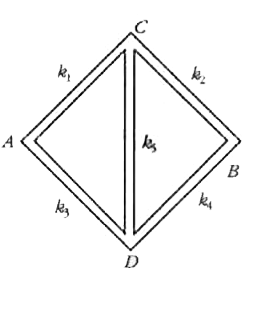
Five rods of same dimensions are arranged as shown in the figure. They have thermal conductivities k1,k2,k3,k4andk5 when points A and B are maintained at different temperatures. No heat flows through the central rod if Solution in Kannada
k1k4=k2k3
k1=k4andk2=k3
k1k4=k2k3
k1k2=k3k4
The correct Answer is:A
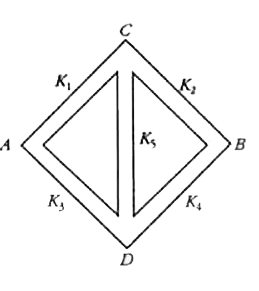
Let x and A be the length and cross-sectional area of each rod.
∴ Thermal resistance of the rod, AC,
RAC=xK1A
Similarly,
RBC=(x)(K2A),RAD=xK3A,RDB=xK4A
Now, there will be no heat flow through the central rod CD if C and D are at the same temperature. using electrical analogy for heat conduction, we get
RACRBC=RADRDB (Wheatstone bridge principle)
∴x/K1Ax/K2A=x/K3Ax/K4A⇒K2K1=K4K3
or, K1K4=K2K3.
Topper's Solved these Questions
Similar Questions
A balloon starts rising from thee ground with an acceleration of 1.25m/s2. After 8 s, a stone is released from the balloon. The stone will (taking g=10ms−2)
View SolutionThe displacement time graph of a particle executing SHM is as shown in the figure. The corresponding force-time graph of the particle is-
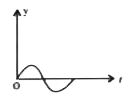
View SolutionTwo rods A and B of different materials are welded together as shown in figure. Their thermal conductivities are K1 and K2. The thermal conductivity of the composite rod will be
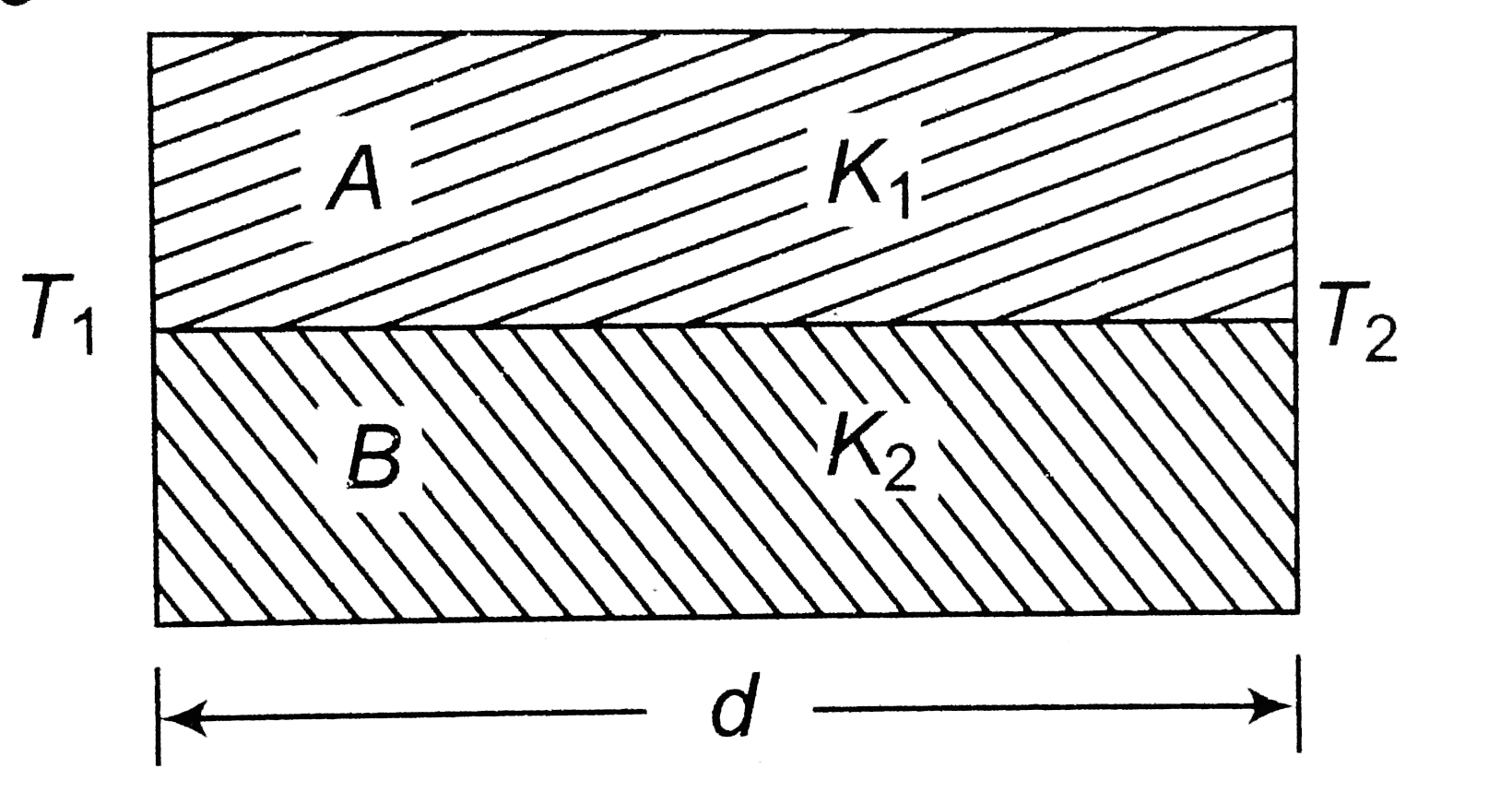
View SolutionTwo rods A and B of different materials are welded together as shown in figure. Their thermal conductivities are K1 and K2. The thermal conductivity of the composite rod will be
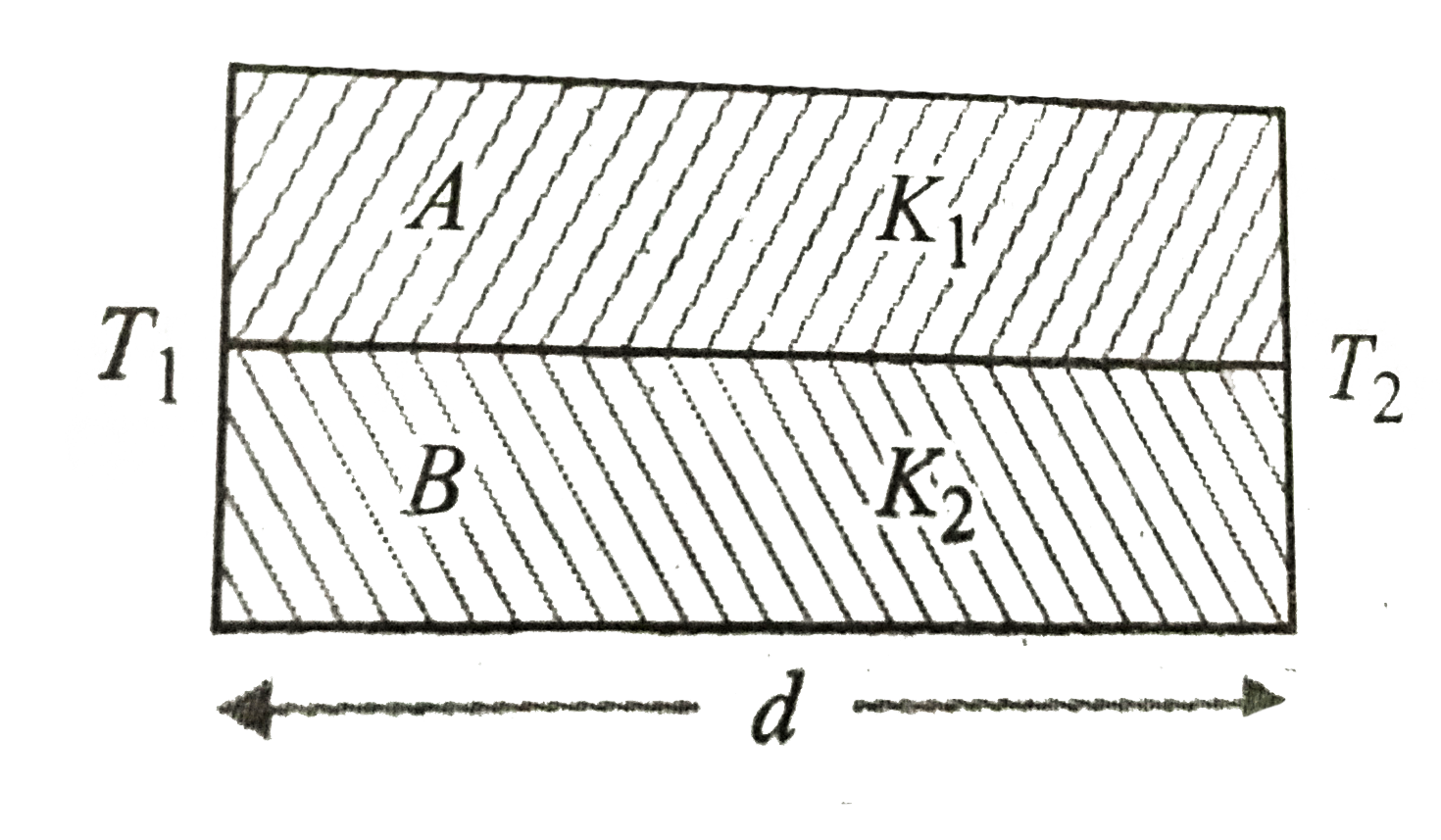
View SolutionTwo rods one is semi circular of thermal conductivity K_(1) and otheir is straight of thermal conductivity K_(2) and of same cross sectional area are joined as shown in the The points A and B are maintained at same temperature difference. If rate of flow of heat is same in two rods then K_(1)//K_(2) is .
View SolutionTwo rods of the same length and diameter, having thermal conductivities K1 and K2, are joined in parallel. The equivalent thermal conductivity to the combinationk is
View SolutionFive rods of same dimensions are arrranged as shown in the figure. They have thermal conductivities K_(1), K_(2), K_(3), K_(4) and K_(5) . When points A and B are maintained at different themperature, no heat flows through the central rod if
View SolutionFive rods of same dimensions are arranged as shown in the figure. They have thermal conductivities K _(1) , K_(2) , K _(3) , K_( 4) and K_( 5) . When points A and B are maintained at different temperatures, no heat flows through the central rod if
View SolutionRate of heat flow through two conducting rods of identiclal dimensions having thermal conductivities K_(1) and K_(2) and Q_(1) and Q_(2) when their ends are maintained at the same difference of temperature individually. When the two rods are joined in series with their ends maintained at the same temperature difference (as shown in the figure), the rate of heat flow will be
View SolutionFive rods of same dimensions are arranged as shown in the figure. They have thermal conductivities k1,k2,k3andk5. When points A and C are maintained at different temperature, no heat flows through the central rod if
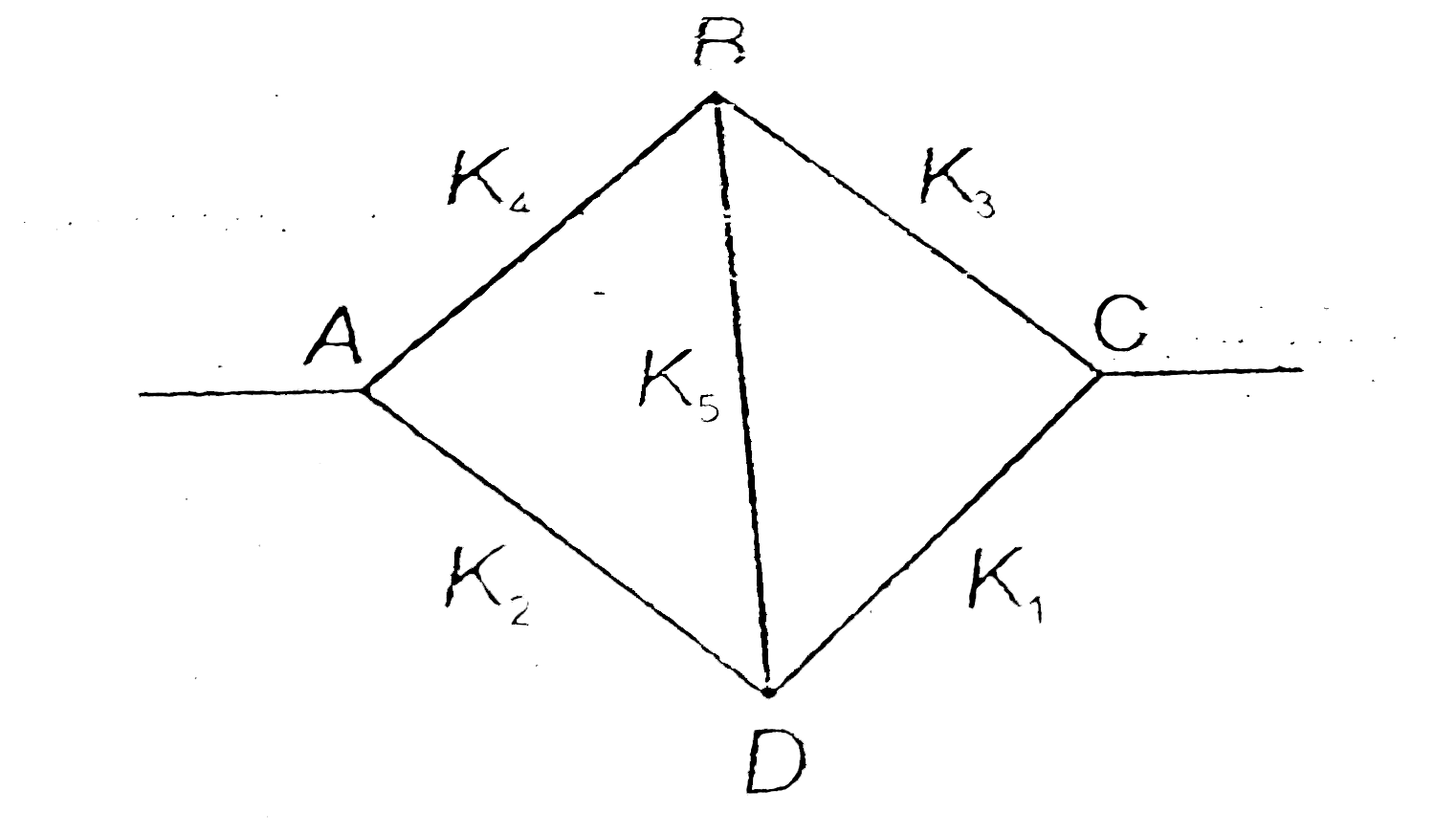
View SolutionThree rods of same dimensions are arranged as shown in the figure. They have thermal conductivities K1, K2 and K3. The points A and B are maintained at different temperatures. For the heat to flow at the same rate along ACB and AB,
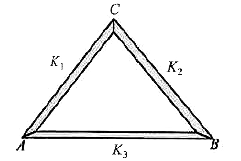
View SolutionFive rods of the same size are arranged as pictured. Their thermal conductivities K_(1), K_(2), K_(3), K_(4) And K_(5) is. When the points A and B are placed at different temperatures, there is no heat flowing through the middle rod, if
View Solutionसमान आकार की तीन छड़ें चित्रानुसार व्यवस्थित की गई हैं इनकी ऊष्मा चालकताएँ K1,K2 एवं K3 है। बिन्दु P व Q को अलग-अलग तापों पर इस प्रकार रखा जाता है, कि PRQ व PQ के अनुदिश ऊष्मा प्रवाह की दर समान है, तब
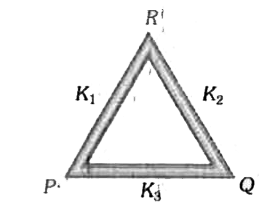
View SolutionThree rods of identical cross - section and length are made of three different material of thermal conductivity k1,k2 and k3 respectively. They are joined together at their ends to make a long rod (See figure). One end of the long rod is maintained at 100∘C and the other at 0∘C ( See figure ). If the joints of the rod are at 70∘C and 20∘C in steady state and there is no loss of energy form the surface of the rod, the correct relationship between k1,k2 and k3 is
View SolutionRate of heat flow through two conducting rods of identical dimensions having thermal conductivities K1 and K2 and Q1 and Q2 when their ends are maintained at the same difference of temperature individually. When the two rods are joined in series with their ends maintained at the same temperature difference (as shown in the figure), the rate of heat flow will be
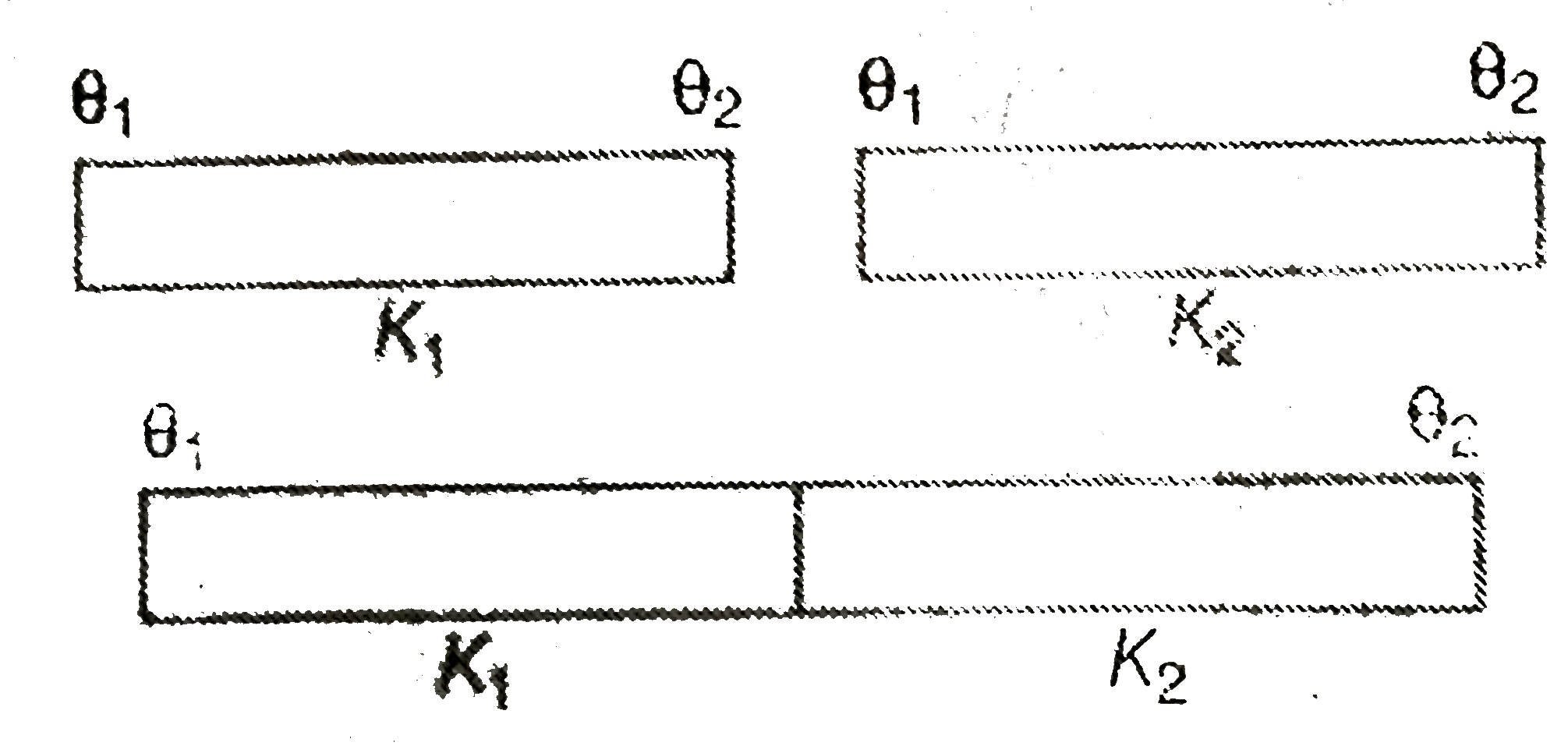
View Solution
